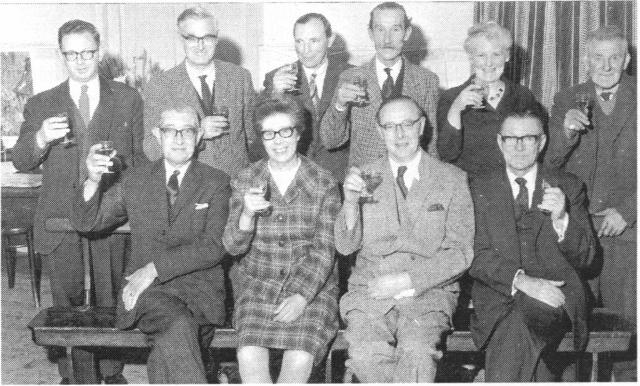
| |
| President | Mr FD Johnston (1970-79) |
| Chairman | Mr Joseph Henry Sutcliffe (1969-71) |
| Mr Horace George Ward (1971-73) | |
| Mrs Helen M Lawson (1973-80) | |
| Secretary | Mr Donald F Wormald (1969-1971) |
| Mr Joseph H Sutcliffe (1971-1975) | |
| Mr A Roberts (1975-80) | |
| Assistant Secretary (1) | Mr Robert E Redman (1969-1970) |
| Mrs Olive Gray (1970-1978) | |
| Assistant Secretary (2) | Mr D Roberts (1975-79) |
| Treasurer | Miss Dorothy M Eades (1969-80) |

 |
| Horticutural Society Worthies - late 1960s. |
| (Photo by Skyrack Express) |
| Left to right. Back row; Jim Hannam,
Horace Ward, Harry Teale, Mark Keats, Mrs Williams, Fred
Scargill. Front Row : Joe Sutcliffe, Dorothy Eades, Edward Horner, Donald Wormald. |
|